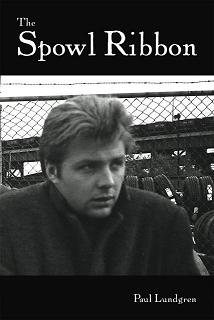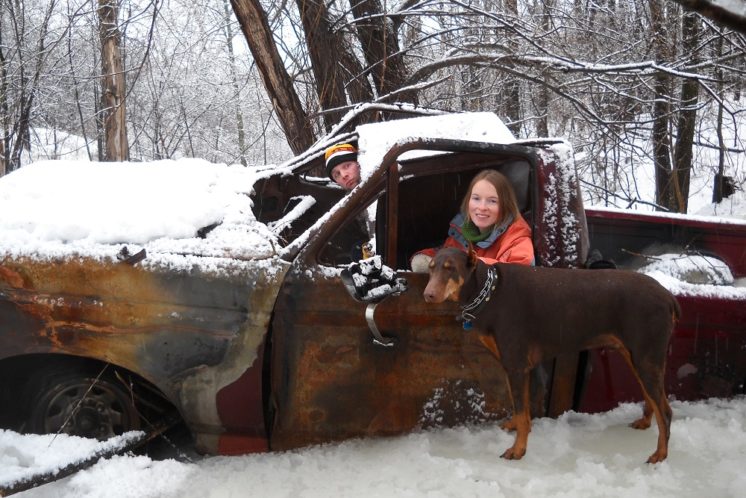Dividing Duluth: The Abandoned Car Test
 I’ve lived in West Duluth for the vast majority of my life. The most significant exceptions are the year I lived in the Endion neighborhood near the Duluth Armory and the three-and-a-half years I lived in the Central Hillside at Washington Studios Artist Cooperative.
I’ve lived in West Duluth for the vast majority of my life. The most significant exceptions are the year I lived in the Endion neighborhood near the Duluth Armory and the three-and-a-half years I lived in the Central Hillside at Washington Studios Artist Cooperative.
Though my experiences are largely seen through western Duluth eyes, I like to think of myself as a somewhat impartial observer. I bleed the maroon and gold of a Denfeld Hunter, but I have empathy for Trojans, Cakes, Hilltoppers and those funny little home-schoolers and international magnet arsty-fartsies or whatever they are. We’re all Duluthians, Americans and humans. But we’re also part of many tribes, and our neighborhoods can define us in ways we don’t often think about.
Around the time I graduated from high school, a popular pastime among my friends was to pile into a car and simply drive around with no purpose. We were young, full of enthusiasm, and generally unfamiliar with the world outside of West Duluth. Simply driving east of Lake Avenue at that time seemed like a minor adventure, and if we were creative or lucky enough we could turn it into a significant adventure. At the time, the young women of Duluth had very different hairstyles on each side of town, so there was a visible sense of exploring a new culture in just an eight-minute drive.
A place we returned to a few times on summer days was a railroad bridge where Amity Creek and the Lester River merge. A rope was fastened under the bridge for the adventurous to clasp onto and swing off a cliff and let go to dive into the spot below where the water pools. One time after a few plunges in the river, we drove around the neighborhood aimlessly and eventually one of us complained that someone’s wet sneakers smelled terrible. The owner of the offending shoes responded by taking them off and throwing them out the window, which solved a problem and got some laughs. But a few minutes later a police car pulled us over because we’d been identified as footwear litterers. We were stunned. No one in West Duluth would report kids throwing shoes out a car window to the authorities. We were on the wrong side of town.
In the late summer of 2003, when I lived in the Central Hillside, I noticed an abandoned car on the street outside my apartment. Nothing happened with it for several weeks, and I eventually realized that car was the key to my understanding of Duluth neighborhoods.
Although there are many unique areas of Duluth, the city is essentially divided into just three sections: West Duluth, Central Hillside and East Duluth. Perhaps the reason for this is that for many years there were three public high schools — Denfeld, Central and East — serving students in each section of the city. Though Central High School no longer exists, I would maintain that Duluthians are still raised three different ways. Maybe this will change over time, but I don’t think it has yet.
Below is the little role-play situation I developed in 2003 to illustrate the differences from one section of the city to the next. I offer it as a public service to future Duluthians who are trying to determine which area best suits them.
Here we go:
Say you notice there is a strange car parked on the street. The car has a flat tire and a smashed windshield. A few days go by and the car doesn’t move at all. How do you want your neighbors to react?
- If you live in East Duluth a few days wouldn’t even go by before the car would be towed. The first person to notice it would call the police immediately and report the nuisance vehicle.
- In the Central Hillside everyone would ignore the car and it would sit undisturbed until winter, when the snowplows need to get through. Then the city would have it towed. Although many people would notice the car for several months and recognize it as abandoned, it would never even become a subject of conversation.
- In West Duluth the car would go undisturbed for a few days, and then everyone would start talking about it. Theories of where it came from and what happened to its owner would abound. No one would call the police, though. After a month or two, little kids would start playing inside the car until a few older kids would eventually come along and push it down a hill into a crick.
Perhaps credentialed psychologists could probe deeper into this, but I feel like I’ve done my part to lay the groundwork with some solid observational stereotyping. I can’t sit here writing essays all day obsessing over details like why certain creeks are creeks and other creeks are cricks. I’ve got important things to do. As a reformed adult delinquent it’s my job to go around pulling shopping carts and couches out of the cricks and picking up sneakers off the curbs.
I’m not ambitious enough to tow vehicles out of cricks, though, so I just play inside them like a good West Duluthian.
 Paul Lundgren is author of The Spowl Ribbon, a book released in 2010 that finally broke even in 2015. Publishing success!
Paul Lundgren is author of The Spowl Ribbon, a book released in 2010 that finally broke even in 2015. Publishing success!
Recommended Links:
Leave a Comment
Only registered members can post a comment , Login / Register Here














11 Comments
Arlene Jarvis Johnson
about 6 years agopats
about 6 years agoPaul Lundgren
about 6 years agoToivo
about 6 years agoLes Locklear
about 6 years agoKarl
about 6 years agoMark Medelbo
about 6 years agoPaul Lundgren
about 6 years agoHelmut Flaag
about 6 years agoSteph
about 6 years agoDave Sorensen
about 6 years ago